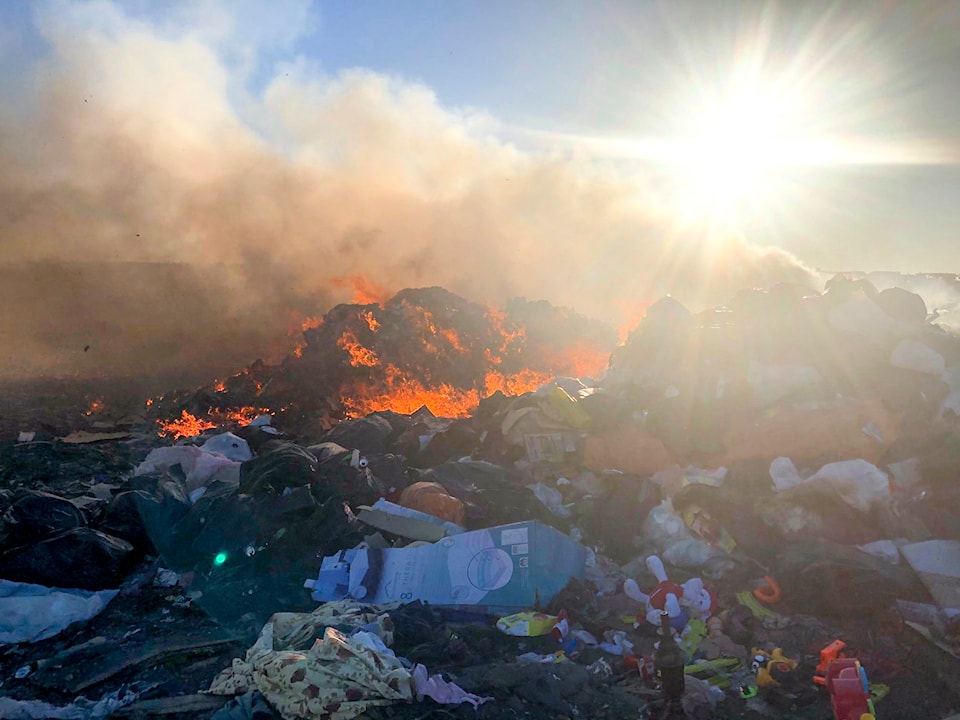When warm temperatures slowly melt the mountains of snow around Rankin Inlet, an ugly truth about waste management in the Kivalliq community is laid bare on Hudson Bay.
“It's garbage,” said Rankin Inlet Mayor Harry Towtongie. “Shopping bags, cardboard boxes, everything blows out there. In the springtime you see a lot of dots on the ice. It's not a good thing.”
The problem is the community’s landfill, which has been in use since at least the 1970s, is full, he said.
“It was OK when there were 500 people in the community,” he said. “Now we're almost 3,000 people and it's still there and it's filling up. We need a new landfill but we cannot open another landfill without closing this one off and it's a long process and expensive.”
Temporary berms and fences have been installed to try and keep the trash in place, but “the wind doesn’t help,” he said, and the dump was built quite close to the community to keep transportation costs low.
That’s why Towtongie’s happy a new report published March 23 by Oceans North is calling for action to improve waste management in Arctic communities.
“We're turning a blind eye to this problem,” he said. “I'm glad this is at least coming out and hitting the news because this is seen not only in Rankin. We also see this in other communities. It's a problem all over the Arctic and we need federal funding to deal with these issues.”
“We have a disaster, that's how I see it,” he continued.
After collecting data in 51 communities across Inuit Nunangat, the 56-page Oceans North report concluded Northern communities face reduced access to important waste disposal services and infrastructure.
Problems include a shortage of economically-friendly alternatives to simply dumping waste in landfills, out-of-date facilities and fewer resources to address these shortcomings.
“Unlike most southern Canadians, we have faced chronic, large and growing municipal infrastructure gaps for decades, and limited say in the investments and decision-making about how to tackle the growing impacts of accumulating waste in our communities,” stated Inuit Tapiriit Kanatami President Natan Obed in the report. “The gaps in municipal-level capacity to address needed upgrades to entirely inadequate waste management and infrastructure deficits in our 51 communities have direct impacts on the health of our families.
“Our local solid waste landfills and wastewater lagoons are increasingly ill-equipped to handle the volume and toxicity of the waste they store,” Obed continued. “Many of our communities are running out of space to address infrastructure deficits, including much-needed housing, and cannot accommodate landfills with larger and larger footprints. Innovative solutions are needed to decrease the size of our landfills and wastewater lagoons, and to greatly reduce the risk that climate change impacts, including permafrost melt and coastal erosion, pose to the integrity of the landfills and sewage lagoons in our remote and largely marine coastal communities.”
According to the report, governments and private industries should work together to develop “locally based waste management solutions.” It suggests governments set a goal of reducing waste by half across the North by 2040.
It also calls for a “public data reporting system for waste management,” and states the private sector should implement extended producer responsibility (EPR) programs to products.
That means companies would include all of the environmental costs associated proper disposal of their products.
Oceans North spokesperson Susanna Fuller said waste management problems impact Arctic communities on a daily basis.
“If the landfill is right near your community, it affects it even more,” she said.
Though the Canadian government has made many national and international commitments to fight waste and plastic pollution, Canada's Arctic and Northern Policy Framework does not address waste management.
“That policy gap needs to be filled,” Fuller said.
In the future, big infrastructure solutions such as waste-to-energy projects could help the problem but at the same time, more can be done at the local level, she said, such as the banning of single-use plastics or using laundry strips instead of plastic bottles of detergent.
“From a procurement perspective there’s a lot that communities can actually do,” she said, “but there’s no one silver bullet solution.”
